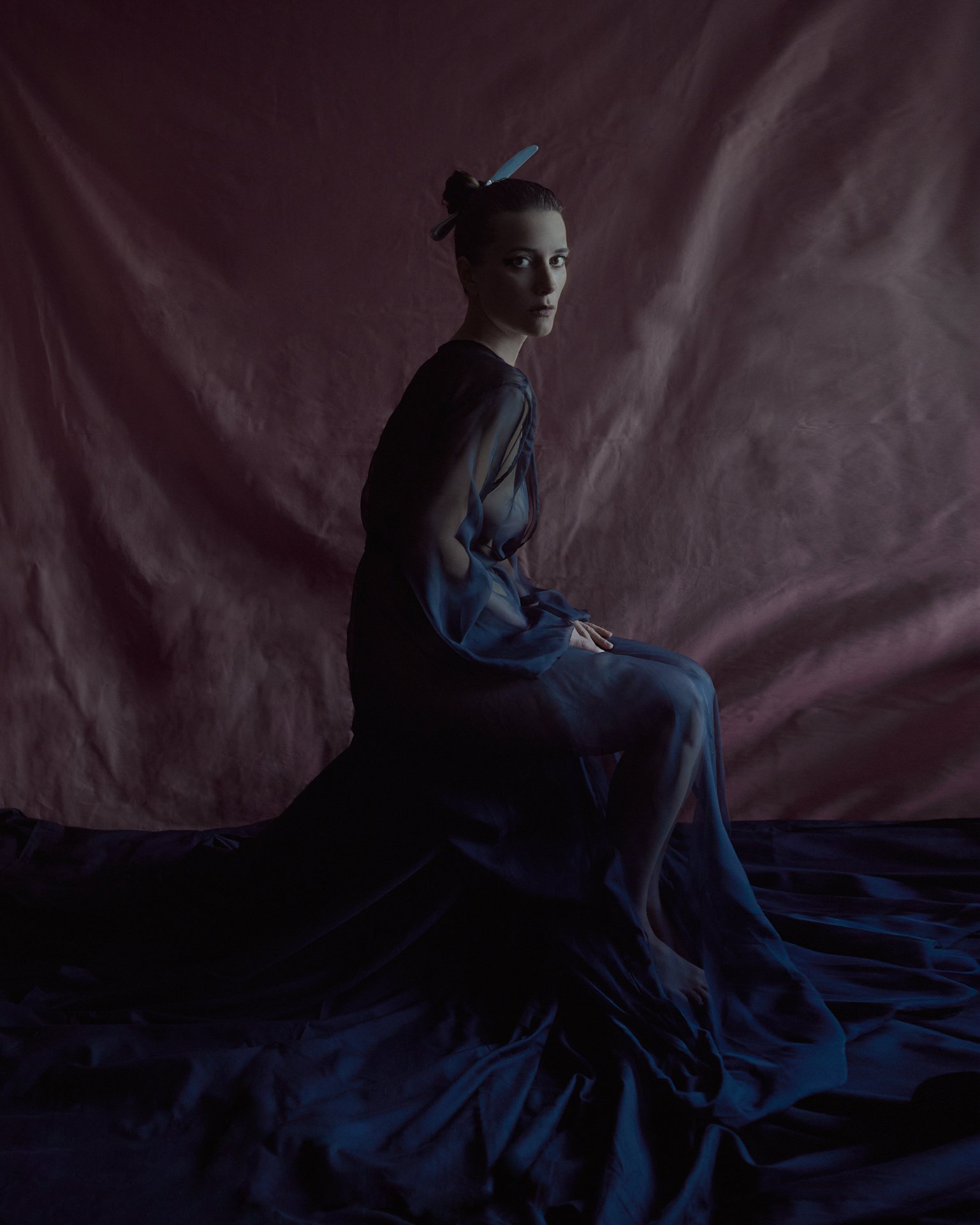Journey into thyself ( ongoing project)
Artist’s statement
While working on this series of self-portraits I spent a lot of time with myself, contemplating and questioning different aspects of my life, particularly the rules and boundaries I set for myself. Who would I find?
A key part of my process involves inquiry and reflection. With other projects, this is a difficult task, and it was even more challenging when considering myself as the subject. Could I truly confront myself, even the darkest parts, and remain unbiased? I decided to approach this challenge with the assumption that all of my rules and boundaries had no merit, poking holes in them from all sides. What would femininity mean to me now? Who would I find?
Growing up in post-Soviet Russia I subscribed to the traditional conventions that a woman must get married in her early 20s, have children before 30, and silently endure abuse her entire life. I was taught it was humiliating to be single for long periods of time. I was taught that older, unmarried women hold a particularly low social status regardless of wealth or occupation. I believed that couples with no children were imperfect and that a woman must keep silent in order to save her family. Today, in my late 30s, I don't fit the traditional Russian mold: I don't have kids or a “normal” job with a stable income. Who am I?
I grew up in a Russian family in which male physical and emotional abuse was normal. The brunt of this abuse came from my father in the form of punishment for disobeying his rules. Nobody talked about it. My family and I kept quiet. I believed that I deserved his abuse. In my teens, I was sexually abused and sexually harassed. I was terrified to walk in my own neighborhood. Like I was taught, I blamed myself for looking older, for being beautiful and sexy. Like I was taught, I locked away the pain somewhere I couldn’t access. I became a true Russian woman. I too endured physical suffering. I too swallowed the pain and remained outwardly untouched and unaffected.
“Today not only in North America and Europe but in the third world also women are coming forward to protest their oppression as women—to fight against rape, bride-burning, female circumcision, inheritance systems which term them into propertyless dependents, unequal pay, lack of access to work, and sexual violence inside and outside the family.” (“Patriarchy: The Analysis of Women’s Oppression,” Gail Omvedt, 1986)
My portraits express an introspection not only as an individual, but as a collective female consciousness, in which I discovered a lot of pain, sorrow, and guilt that have been suppressed for years.
While self-reflecting for this series, I also found inside myself is a beautiful flower, soft and beautiful. It was vulnerable, it was fragile. I danced with myself in my own world, feeling my own body, my own boundaries, my own sensuality. Becoming truly vulnerable is terrifying. Will I be judged by friends and family, by society, for showing my naked body? I unearthed shame for my own body deep inside myself. But becoming vulnerable was the first step in discovering my own truth and my relationship to it. This series of self-portraits is the result of listening more intently to my feelings, thoughts, and desires. I discovered a more profound love and appreciation for my own skin, comfort, and security in being open to others. I believe we are all searching for a sense of balance, the balance between comfortable and uncomfortable, a shaky state of zen.
This self-portrait series is the sum of a deep introspective process that led to the empowerment of me as a woman. I found respect, immersive beauty, and personal power by uncovering myself, petal after petal, feeling, sitting with myself, accepting.















